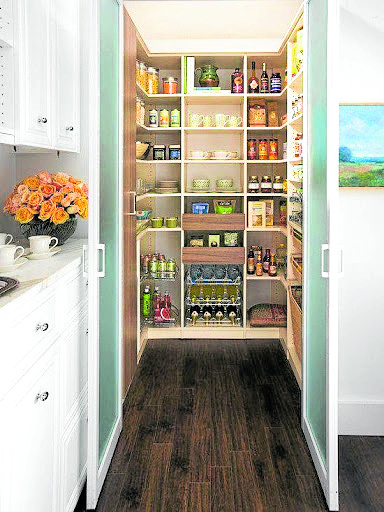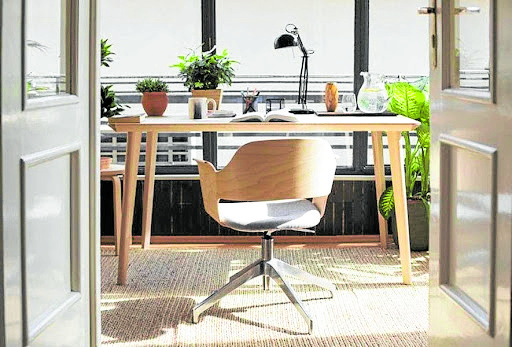The lockdowns are profoundly changing the way we live

Some workspaces are transient. Here, a simple and flexible set up adapts easily to change. —MYMOVE.COM AND KATARZYNA BIALASIEWICZ/GETTY IMAGES
Are we under a GCQ? Or is it still an MECQ? And what does a granular lockdown actually mean? As if our worlds are not jumbled enough, we have this kind of confusion governing us. But there’s no escaping the hard truth that we are still on some form of lockdown.
Many have given up on the hope of a more “connected” everyday routine—of being back in the office meeting with colleagues, or being out with friends at a café somewhere. Expanding the sphere of our existence beyond our homes is difficult to realize, and creating some delineation between home and work life is even more so. We’re running close to two years, and yet we don’t see the end to this cycle.
With every lockdown is the understanding that our lives at home have profoundly changed. We have accepted that our homes make up the larger part of our world.
This shift has opened other pathways to living. More than changing our daily patterns and habits, these lockdowns are also changing the way we imagine growing within our spaces. As the months move on, we continually find ways to improve the quality of our locked-down lives.
For those who work from home, the notion that distance is not a hindrance to getting work done is now an established fact. Without the need for daily travel, the countryside and the suburbs are an attractive alternative to the urban lifestyle that has now fizzled out. It is not surprising that more than a year into this pandemic, property developers continue to sell out their inventories for land outside Metro Manila.
Given this, food security figures into the equation. Where there is more land and more space, harvesting your own produce and even raising certain animals for consumption are made viable. For many, it is also therapeutic and helps enhance their well-being. Those who chose to stay in the city have recreated their urban backyards into farms or homesteads yielding a good amount of produce, with small condominium balconies not to be excluded as many are blooming into prolific hanging gardens.
Because of our need to nurture our mental and emotional wellness and strengthen our immune systems, exercise and movement have taken priority in our daily routine.
Backyards, terraces and other outdoor spaces are beneficial. Smaller indoor areas have provided for physical activity, too. A four-meter space, easily carved out by shifting some furniture and adding a mat, can function as an exercise area. For others, rooms have been fully converted, fitted with equipment to accommodate the workout of their choice.

The rural escape is marked by a more relaxed environment in the company of nature. —BUSINESSBROKERAGEBLOGS.COM
Simultaneous presence of all family members has spawned the dilemma on how to carve out personal spaces for everyone. Spatial boundaries become challenging to define. Never before has every little square meter and wall space been evaluated and scrutinized for what it can contribute to a household’s needs.
The fold-away Murphy bed could have been crowned 2020’s Furniture of the Year, together with the void spaces under beds that have now found purpose. Awareness of other factors such as noise and visual comfort has driven the demand for curtains, screens, window tint, scent sprays, noise-reducing door strips and various types of insulation, in addition to what already flew off the digital shelves last year: ergonomic seating, worktables, bookshelves, filing cabinets, and Zoom lights.
Small businesses have taken the concept of work-from-home to a different level, from digital space to a brick-and-mortar production area in the home.
For those in the food business, kitchen functions have found their way into dining rooms and other areas. For those that deal with merchandise, bedrooms have transformed into sorting areas, bookshelves into stocking shelves. The growth of small and medium scale enterprises, largely run by women, has conveniently settled into the home, forcing entrepreneurs to compartmentalize their activities like working and caregiving, within limited space. Will we see them eventually expanding outside the homes? Only time will tell.
At some transient point in time, our homes will feel right. But change is inevitable. As we go through this process of dealing with our vastly modified, continually morphing lives, there will be many victories and frustrations. But someday the dust will settle and the smoke will clear, and by then we would have fundamentally learned—within the confines of home—how to live our lives better.
Ar. Isabel Berenguer Asuncion is a practicing architect and one of the two Principal Architects at Asuncion-Berenguer Inc., an architectural design and interior architectural design practice. Contact her through @isabelbasuncion



